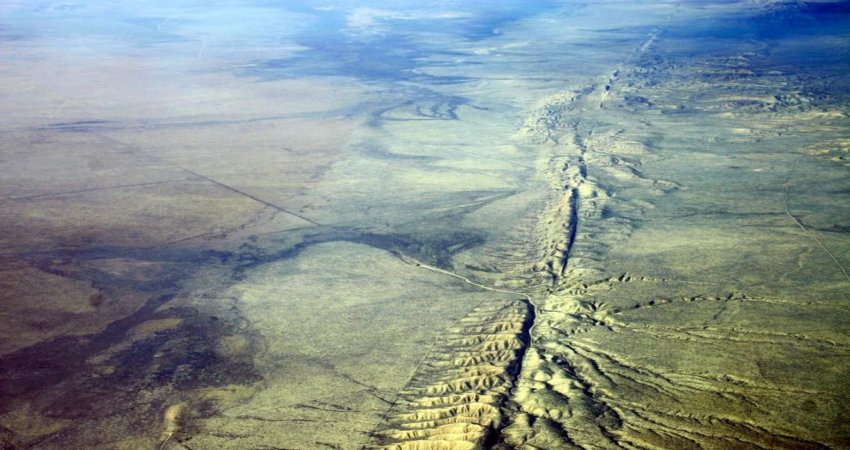Eddie Gonzales Jr.- MessageToEagle.com – Something strange is happening beneath the ground in California. Scientists are attempting to understand the cause of unsettling tremors along the San Andreas Fault, the most dangerous crack in America.
San Andreas fault is an enormous crack that extends about 800 miles (1,300 km) through California.
The fear of a huge earthquake from the San Andreas has been a major subject for disaster films, and it’s vital to understand what is causing the earthquakes.

San Andreas Fault. Credit: Public Domain
USC scientists now report rock-melting forces occurring much deeper in the Earth than previously understood to appear to drive tremors along a notorious segment of California’s San Andreas Fault.
The study from the emergent field of earthquake physics looks at temblor mechanics from the bottom up, rather than from the top-down, with a focus on underground rocks, friction, and fluids. On the segment of the San Andreas Fault near Parkfield, Calif., underground excitations — beyond the depths where quakes are typically monitored — lead to instability that ruptures in a quake.
“Most of California seismicity originates from the first 10 miles of the crust, but some tremors on the San Andreas Fault take place much deeper,” explained researcher Professor Sylvain Barbot, from the University of Southern California.
“Why and how this happens is largely unknown. We show that a deep section of the San Andreas Fault breaks frequently and melts the host rocks, generating these anomalous seismic waves,” Barbot added.
The findings are significant because they help advance the long-term goal of understanding how and where earthquakes are likely to occur, along with the forces that trigger temblors.
Better scientific understanding helps inform building codes, public policy, and emergency preparedness in quake-ridden areas like California.
The findings may also be important in engineering applications where the temperature of rocks is changed rapidly, such as by hydraulic fracturing.
Mysterious Melting Rocks Beneath The San Andreas Fault
So what’s happening deep in the Earth to explain the rapid quake recurrence?
Using mathematical models and laboratory experiments with rocks, the scientists conducted simulations based on evidence gathered from the section of the San Andreas Fault extending up to 36 miles north of — and 16 miles beneath — Parkfield. They simulated the dynamics of fault activity in the deep Earth spanning 300 years to study a wide range of rupture sizes and behaviors.
The researchers observed that, after a big quake ends, the tectonic plates that meet at the fault boundary settle into a go-along, get-along phase. For a spell, they glide past each other, a slow slip that causes little disturbance to the surface.
See also:
New Giant 50-Metre Deep Sinkhole Just Opened Up In The Arctic – This One Is Unique Scientists Say
Ring Of Fire: Home To Powerful And Deadly Forces Lurking Deep Beneath Earth’s Surface
Ancient Forest Discovered Inside The Giant Expanding Batagaika Crater
But this harmony belies trouble brewing. Gradually, motion across chunks of granite and quartz, the Earth’s bedrock, generates heat due to friction. As the heat intensifies, the blocks of rock begin to change.
When friction pushes temperatures above 650 degrees Fahrenheit, the rock blocks grow less solid and more fluidlike. They start to slide more, generating more friction, more heat, and more fluids until they slip past each other rapidly — triggering an earthquake.
“Just like rubbing our hands together in cold weather to heat them up, faults heat up when they slide. The fault movements can be caused by large changes in temperature,” Barbot said.
“This can create positive feedback that makes them slide even faster, eventually generating an earthquake.”
Written by Eddie Gonzales Jr. – MessageToEagle.com Staff






